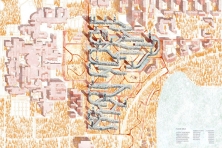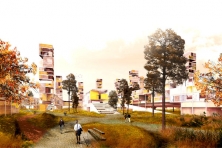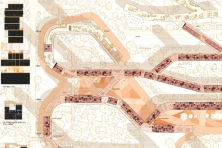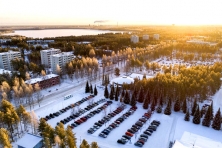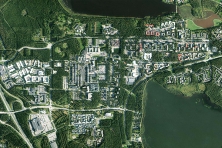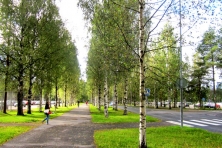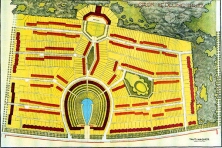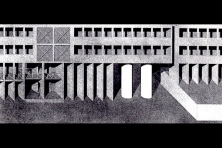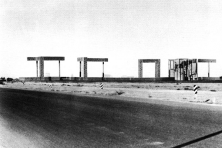A Tale of Two Lakes
Oulu (FI) - Mentionné
DONNÉES DE L’ÉQUIPE
Représentant d’équipe : Francisco José Blázquez García (ES) – architect
Associé: José María Calvo Martínez-Aldama (ES) – architect
ubico.st@gmail.com – ubicuo-studio
Voir la liste complète des portraits ici
Voir la page du site ici

F.J. Blázquez García et J.M. C. Martínez-Adalma
INTERVIEW en anglais
Cliquer sur les images pour les agrandir
1. How did you form the team for the competition?
Ours is a two members team. We met each other in 2013 while we were very young design tea-chers at the ETSAM (Technical School of Architecture of Madrid), and that was the moment we discovered that we had so many ideas in common. Since then we have been working together in a large number of competitions and projects. Europan Competitions were a big challenge for us, since we have seen so many great projects taking part on them since we started to study architecture; that’s the reason why we both feel so proud to be able to participate now.
2. How do you define the main issue of your project, and how did you answer on this session main topic: the place of productive activities within the city?
The project main goal is to smoothly change the urban landscape of the place we were given by the organization, in the outskirts of Oulu. To us, such a valuable and rich natural environment should never be wasted. That is the reason why our proposal is so morphologically radical but at the same time, tries to integrate with the natural species already existing there. It also promotes bicycle use and public transportation in order to achieve good accessibility to every level of the buildings. At the same time, all those paths through the buildings allow us to encourage a net of public spa-ces, commerce and infrastructures which are mixed withe the different kind of dwellings. Of course this productive net is displayed where it is considered to be needed the most, while the building typology allows us to reach a high level of density (a key concept for the success of the project) while respecting Finnish nature.
3. How did this issue and the questions raised by the site mutation meet?
To answer the challenge of urban productivity through a period of time we thought about a three phases project. Those phases allow the local population to embrace the project even before it has reached its peak. To us a key concept in urban landscape is to continuously update a project of architecture and urbanism. It is not enough to propose some innovative ways of living and once they are working just go somewhere else and do the same. To make sure a neighborhood is liva-ble it needs constant attentions and updates. A big value of our project is the continuous updating process which will not stop when the buildings are already finished and working.
4. Have you treated this issue previously? What were the reference projects that inspired yours?
Yes, we have treated those concepts in small projects, but never in such a big scale. To us that has been probably the main challenge of this competition, and we have discovered a lot of new issues that you cannot find in smaller scales. At the same time, to us, the most important referen-ces have not been projects but ideas. Reading Aldo Rossi’s theories on architecture and urbanism, learning from uthopic projects like Steven Holl’s eighties proposals and concepts like Saskia Sas-sen’s, have been key ideas in the way we think about city. The quarter of Hufeisensiedlung Britz in Berlin designed by Bruno Taut and Martin Wagner between 1925-1933 is one of our most beloved projects as well.
5. Urban-architectural projects like the ones in Europan can only be implemented together with the actors through a negotiated process and in time. How did you consider this issue in your project?
With project phases. Some of them will only activate if inhabitants want to do so, others can be put forward and be given more priority in case it is needed. Its so important that citizens and rulers have always several options to choose for, and that’s an architect task, not only design. We offer a big display of options for this project to be developed the way citizens want. It would be a big success that students who start living in the apartments can, when the time comes, create a family and live a good life within the neighborhood itself.
6. Is it the first time you have been awarded a prize at Europan? How could this help you in your professional career?
Yes, it has been our first time in both taking part and being awarded, and we are so happy about it. We consider this award as a step further in our professional careers. We feel we have a lot of things to say and a lot to grow as architects.
